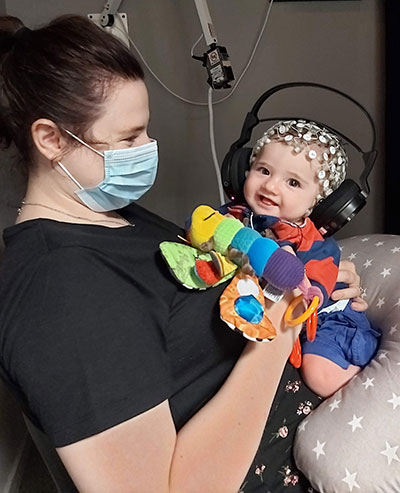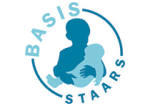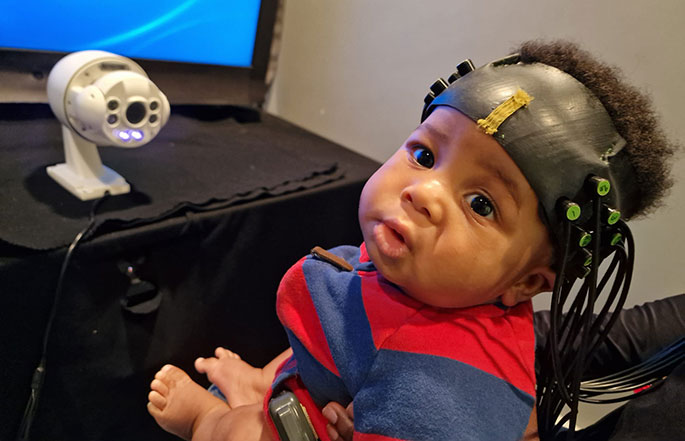The aim of the STAARS study is to identify early markers in the development of Autism and/or ADHD to understand more about the mechanisms of these neurodevelopmental disorders, with the aim to develop more effective early interventions.
To do this, we recruit both participants who have parents or siblings with a diagnosis of either ASD and/or ADHD and those infants with no familial history of the disorders.
We see the infants at 1, 5, 10 and 14 months old, with follow-up toddler visits at 2 and 3 years; this allows us to see how they grow and develop over these first few years of life.
The study uses questionnaires, eye-tracking, EEG and behavioural games to get a full picture of the infant’s development.
History of the study
 Since 2014, the STAARS team has seen over 300 infants! STAARS data has already contributed to many scientific papers, one of the most recent of these (by Begum Ali, Gosse et al. 2023) looked at the differences in infant sleep in those with and without a family history of ASD and/or ADHD.
Since 2014, the STAARS team has seen over 300 infants! STAARS data has already contributed to many scientific papers, one of the most recent of these (by Begum Ali, Gosse et al. 2023) looked at the differences in infant sleep in those with and without a family history of ASD and/or ADHD.
The study also looked at how sleep in infancy might relate to later development in early childhood. We found that infants with a family history of ASD demonstrated reduced Night time Sleep (indexed by shorter sleep durations, more problems settling to sleep and increased night awakenings) from as early as 5 months of age.
By 14 months of age, Night Sleep was associated with later social functioning and cognitive abilities as well as ASD traits at 3 years, leading researchers to conclude interventions which target improving infant sleep might be beneficial to this population.
Eligibility
To be eligible to take part in this study you need to have an infant under 14 months old who has a parent or older sibling with a diagnosis of Autism and/or ADHD.
If you are interested in finding out more, please email staars@bbk.ac.uk
Watch our video




















